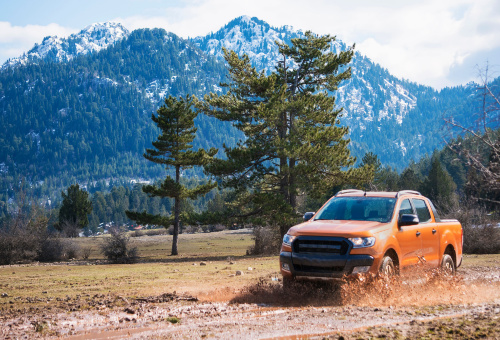
If you are new to the car repair industry in general, and to the world of 4x4 service and repair in particular, you may be tempted to think that the service and maintenance requirements of even a standard, unmodified 4x4 vehicle are largely similar to those of an average passenger vehicle. However, the fact is that 4x4 vehicles such as the example shown here have particularly stringent servicing and maintenance requirements.
There are several good reasons for this, with perhaps the most pertinent being that these vehicles are seldom as tough and durable as their makers claim them to be when they are subjected to tough operating conditions over extended periods. Of course, there are some notable exceptions to this, but there is a general rule that states that unless we pay proper attention to the finer details of the servicing and maintenance requirements of these vehicles, some of their inherent weaknesses have a tendency to show up unexpectedly and/or repeatedly, and more often than not, with distressing regularity.
Thus, in this article, which is the first in a 2-part series, we will take a closer look at the specific servicing and maintenance requirements of not only the 4x4 vehicles that some of us see in our bays almost every day but also the 4x4 vehicles that live extremely tough lives in Australia’s harsh and even extreme environmental conditions. However, before we get to specifics, we need to say that-
Note that although some 4x4 vehicles require more frequent servicing/maintenance than others even in sedate urban conditions, it is not the intention of this article to denigrate the product(s) of any vehicle manufacturer(s), or to promote the product(s) of any vehicle manufacturer(s) over the product(s) of any other manufacturer(s).
Having said that though, it must be stated that the majority of what we know as “proper” 4x4 trucks and other 4x4-capable products offered by all car manufacturers today are sufficiently similar in terms of their overall design, expected useful lifespan and off-road capabilities for the information we offer here to apply to all makes and models of "normal" 4x4 vehicles.
Of course, the proverbial devil always lives in the details, so to keep things simple, this article will exclude vehicles like SUVs and so-called cross-overs, which are essentially hybrids between sedans and/or hatchbacks and SUVs. While there are exceptions, these types of vehicles are primarily designed to be used in urban environments, which excludes these vehicles from the scope of this article although some of what follows also applies to this category of vehicles.
Likewise, the service, maintenance, and repair requirements of highly modified, and often highly specialized 4x4/off-road vehicles that can clamber over car-sized boulders, scale vertical cliff faces, wade through deep-ish rivers, or cross hip-deep mud traps and sand pits on hugely over-sized wheels are also excluded from the scope of this article. This is mainly because no amount of servicing can always prepare these vehicles for the harsh treatment they suffer on a regular basis. Note though, that from a practical perspective much of what follows also applies to this category of 4x4 vehicles, even though most of us seldom (if ever) see examples of these vehicles in our bays, which brings us to-
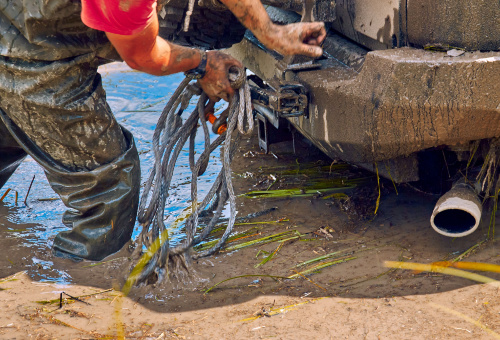
In practice, almost all “normal” 4x4 are primarily designed to be comfortable and even luxurious passenger vehicles with some off-road capability and a somewhat useful load-carrying capacity tacked on. As a matter of fact, a large percentage of 4x4 trucks and other 4x4-capable vehicles are almost exclusively used in urban environments and, therefore, these vehicles very rarely, if ever, see a dirt road.
Nonetheless, while we stated elsewhere that “normal” 4x4 vehicles are not always as tough, resilient, and durable as their makers claim them to be, this is not the same as saying that all, or most, 4x4 vehicles are inherently unreliable and prone to failure. In fact, and even though most normal 4x4 vehicles are comfortable passenger vehicles first before they are anything else, thousands of farmers, mobile mechanics, delivery services, contractors of all kinds, emergency services, and other service providers collectively use many thousands of “normal’ 4x4 vehicles either to earn their livelihoods or to provide emergency services where and when required.
However, and speaking to the main focus of this article, normal 4x4 vehicles typically only survive extreme operating conditions because they are not only serviced and maintained to exceptionally high standards throughout their useful lives but because they are also serviced much more frequently than almost any other category of vehicle in Australia. Thus, these vehicles survive tough operating conditions primarily because they are well cared for, and not because they are inherently tough and durable.
We all know all of the above, but what we sometimes fail to appreciate is that in many cases, these vehicles are not only often put to uses they were never designed for, but they are also often used under demanding, and even extreme operating conditions they were neither designed, nor intended to endure for extended periods. So, what is the point of all of the above, you may ask?
The point is simply this: despite living in harsh environmental conditions, many "normal" 4x4 vehicles manage to survive demanding and extreme operating conditions like (among others) high temperatures, poor dirt roads, dusty environments, and often, having multiple drivers for hundreds of thousands of kilometres without suffering major failures or breakdowns.
Therefore, from a customer service/satisfaction perspective, these high standards of care and maintenance must always be the gold standard we should all strive to achieve. This is especially relevant when we see, or deal with, recurring breakdowns and parts failures on “workhorse” and/or emergency 4x4 vehicles because someone's life may depend on the vehicle not only being roadworthy and fit-for-purpose but also reliable.
All of the above may sound like a major digression from the main topic of this article. However, the purpose of all of the above is that it places the special servicing and maintenance requirements of 4x4 vehicles in general, and of workhorse or emergency 4x4 vehicles in particular, against a background that differs greatly from the maintenance requirements of urban-bound passenger vehicles and/or city runabouts, which brings us to-
We’ve already spent a lot of time on defining the focus of this article, so we will condense the art of maintaining normal 4x4 vehicles to high standards into only a few words. In short, maintaining a normal 4x4 vehicle properly and successfully requires-
The points listed above represent the broad outlines of what a normal 4x4 vehicle requires in terms of servicing when it is used in tough or demanding operating conditions for extended periods. However, as we stated elsewhere, the proverbial devil always lives in the details, so let us look at these, and other points in some detail, starting with-
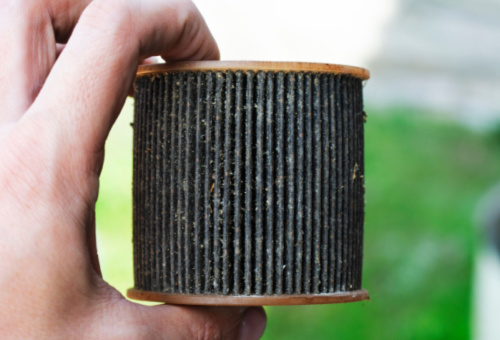
The importance of proper oil filtration cannot be overstated and particularly so on 4x4 vehicles that are used in demanding or extreme operating conditions. However, saying that proper filtration is important is one thing, but actually achieving efficient and effective oil filtration over extended periods is something else entirely. In fact, the efficiency and quality of oil filters on 4x4 vehicles is often the deciding factor that determines how many thousands of kilometres the engine in a 4x4 vehicle outlasts its warranty period. Having said that, let us look at-
The problem with oil filters
In practice, poor oil filtration does not always involve excessively long time intervals between filter replacements; neither does it always involve environmental conditions such as heavy dust loads in the atmosphere. As we all know, both these conditions can reduce the efficiency and/or useful lives of oil filters, but the actual root cause of poor oil filtration often involves the filters themselves, or more specifically, the efficiency rating(s) of the filters.
All high-quality oil filters, including those supplied by reputable manufacturers/suppliers such as Ryco, are designed to have something called an “efficiency rating”, which is an indication of any given filter’s ability to trap and hold onto particulate (solid) contaminants of a specific size or diameter. For instance, if any given Ryco oil filter has a stated ability to trap and hold onto say, 95 per cent of solid particles that are say, 25 microns in diameter, that filter will have an efficiency rating of 95 per cent, but only in respect of solid particles that are 25 microns or larger in diameter.
Thus, an oil filter's efficiency rating of 95 per cent might appear to guarantee good to excellent oil filtration, but the fact is that while such a filter will trap (most)particles that are 25 microns or larger, it will allow all particulate contaminants in the oil that are smaller than 25 microns to pass right through it. Such a filter will also allow at least 5 per cent of particles that are 25 microns in diameter to pass through it.
It is important to note, though, that none of the above means that this particular Ryco oil filter is in any way defective, bad, sub-standard, or unsuitable for use- provided that this filter is used for its recommended application and/or intended purpose.
Let us put this into perspective: a strand of human hair is (on average) about 40 microns in diameter. Thus, the filter described above will allow abrasive solid particulate contaminants that are up to half as big as a human hair is thick to enter into, and become “stuck” or embedded in the clearances between all moving and/or sliding parts in the engine, with predictable and inevitable negative consequences for the engine’s longevity.
Based on the above then, the secret to achieving effective oil filtration is not so much about replacing oil filters frequently, as it is about replacing the correct (and recommended) oil filter more frequently than the vehicle’s service schedule calls for or recommends. (Italics and bolding added for emphasis)
Note that in the context of "more frequent servicing", the correct and/or recommended oil filter would be one with not only the highest possible efficiency rating but also one that can trap and hold onto the smallest possible solid contaminants without impeding the free flow of oil through the filter, which brings us to the topic of-
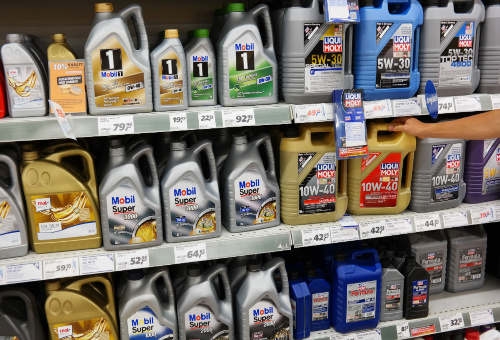
Both types of engine oil have their proponents and detractors, but limited space precludes a rehashing of this debate here. Nevertheless, we can do the next best thing, which is to briefly state the main properties of both types of engine oil, starting with-
Mineral oil
We all know that the oil used in car engines is a highly refined form of crude oil, but what we don't always know is, what "flavour” of crude oil was used in the production of engine oil. In this context, "flavours" refer not only to the sulphur content of the crude oil but also to the types of semi-fossilized materials the crude oil consists of, as well as how old the crude oil is, which is measured in tens or sometimes hundreds of millions of years.
All of the above factors determine not only the chemical composition of the crude oil but also the molecular structure of the refined oil we pour into car engines. Thus, since crude oil is extracted from many places around the world and many “flavours” of crude oil are blended before and during the refining process, both the chemical composition and molecular structure of refined oil offer differ significantly between batches of refined oil.
What this means, in practice, is that the base oil we pour into an engine consists of hydrocarbon molecules that vary in size and structure. What this means for engine lubrication in particular, is that some molecules are small enough to pass right through the clearances in engines without touching sides, while the task of carrying and dispersing the various additives that make lubricating oil work throughout the engine is left to the largest and strongest molecules in the oil matrix.
This characteristic of mineral-based engine oil effectively reduces the lubrication properties of the oil formulation since the dispersion of the additives (in the oil) relies on only a percentage of the hydrocarbon molecules in the oil formulation. Note that this is not the same as saying that mineral oil formulations supplied by reputable oil companies and formulators are seriously deficient in lubricating properties, or that mineral oil formulations should not be used in 4x4 engines; far from it. Millions of vehicles of all categories in Australia, many of which are 4x4 vehicles use, and have used, highly advanced mineral engine oil formulations for their entire productive lives without suffering adverse effects such as engine failures caused purely by a branded mineral oil formulation. Having said that, there is another option to consider, this option being-
Synthetic oil
The term “synthetic oil” is a bit of a misnomer, since the only thing that is in any way “synthetic” about it is that it is not produced by refining crude oil.
Synthetic oil is produced solely by distilling or condensing a variety of hydrocarbon-rich gases such as (among many others) methane and various forms of carbon in a process that has two major advantages over all conventional refining processes. The first is that the chemical properties and characteristics of the final product can be adjusted to suit a particular purpose by using different gas mixtures, and the second is that all the hydrocarbon molecules in the final product are all the exact same size.
The practical effect of the last point is that all the molecules in the oil share the load of carrying and dispersing the additives in the oil equally, which has obvious advantages from a lubricity perspective. Put differently, this means that the friction modifiers, viscosity improvers, corrosion inhibitors, detergents, and other additives in the oil formulation are spread evenly between all sliding or rotating parts, which is why many car manufacturers the world over now use synthetic oil as a first-fill in the engines of many of their products, including 4x4 vehicles.
So, the question remains; which type of oil is best for 4x4 vehicles in Australia? Even considering the harsh local conditions, there is no single correct or wrong answer that will definitively settle the issue one way or the other under all possible operating conditions. Nonetheless, and regardless of the preferences of our customers-
There is a secret to ensuring effective engine lubrication in our customer’s 4x4 vehicles
Some of the most pertinent details of this secret are listed below-
Following the above guidelines will not only extend the life of the engine in any 4x4 vehicle; it will also reduce downtimes and the overall maintenance/service costs of the vehicle over its useful life, which brings us to-
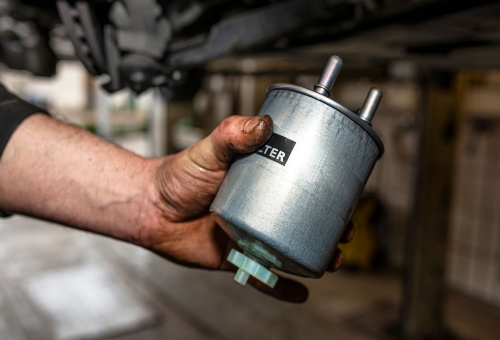
Fuel filters, and especially diesel fuel filters, also have efficiency ratings, but unlike oil filters, the efficiency of diesel fuel filters is based on three rating criteria. Moreover, while manufacturers and suppliers of fuel filters, such as Ryco do provide/publish information on the rating (or size of solid particles any given fuel filter captures), it is not possible to assess the performance of any given fuel filter unless one also knows the efficiencies on which the filter’s rating is based.
In practice, the efficiency of a fuel filter can be expressed either as a percentage or as a Beta ratio, but regardless of which expression one uses, the actual efficiency of fuel filters is measured based on the contaminant load both before and after the filter. We need not delve into the finer points of this calculation here, but the following example should serve to illustrate the difference in the performance of two fuel filters that are both rated to remove contaminants that are 5 microns in diameter from fuel-
If filter “A” has a claimed efficiency of 99 per cent, that filter will remove 99 per cent of solid contaminants that are 5 microns or larger in diameter. On the other hand, if filter "B" has a claimed efficiency of 50 per cent, that filter will remove only half (50 per cent) of similarly sized contaminants from the fuel. So while both filters are rated to remove 5-micron or larger contaminants from fuel, filter “B” will allow about 50 times more particles that are 5 microns in diameter to pass into injection equipment than filter "A", which gives an entirely new meaning to the term "different performance levels".
If you were comparing Ryco fuel filters, none of the above means that one filter is necessarily “better" or "worse" than the other because any given fuel filter's efficiency ultimately depends on the number and average diameter of solid particles in a given volume of fuel. Therefore, in some cases, filter “B”, which has an efficiency rating of 50 per cent at 5 microns, might be better suited to some applications because a) there are fewer solid particles in the fuel, and b), filter "B" it won't clog up as quickly as filter "A", which traps more contaminants (than filter "B") in the same amount of time.
Thus, given the extremely high contaminant levels in our diesel fuel, and particularly so in remote areas, the secret of proper and effective fuel filtration does not involve the frequency of fuel filter replacements as much as it involves replacing fuel filters with filters that have the highest possible (or highest available) efficiency ratings more often than the vehicle’s service schedule calls for or recommends.(Italics and bolding added for emphasis)
Two things are worth keeping in mind, though. The first is that the high contaminant load(s) in our fuel can clog up fuel filters with high efficiency ratings very quickly, and the second is that high dust loads in the atmosphere greatly increase the contaminant load in a vehicle’s fuel tank. Therefore, fuel filters should ideally be replaced at every oil change, and especially so if a second fuel filter is installed after the primary fuel filter to prevent issues with poor fuel flow and subsequent fuel starvation, which leaves us with-
There is much more to successfully servicing and maintaining a hard-working 4x4 vehicle in our harsh conditions, and in Part 2 of this series of articles, we will discuss topics like water/fuel separators and why they sometimes don’t work, as well as the need (or otherwise) to install an oil catch can. We will also discuss brake system performance issues and the need to use only OEM-equivalent brake replacement parts, and other points that include (among others) drive shaft issues and service, general lubricants, tyre pressure monitoring systems, and suspension/steering system service/maintenance.